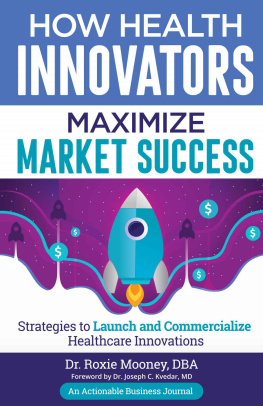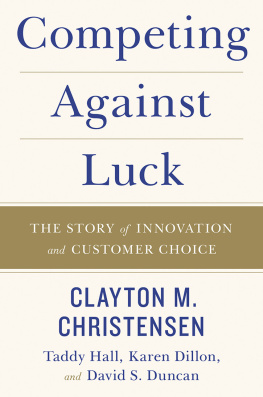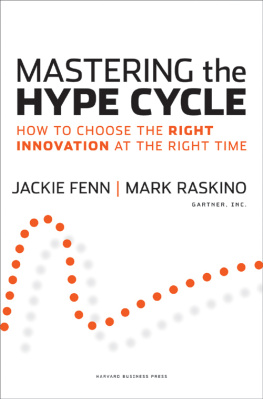Copyright 2008 Gartner, Inc.
All rights reserved
No part of this publication may be reproduced, stored in, or introduced into a retrieval system or transmitted, in any formor by any means (electronic, mechanical, photocopying, recording, or otherwise), without the prior permission of the publisher.Requests for permission should be directed to , or mailed to Permissions, Harvard Business SchoolPublishing, 60 Harvard Way, Boston, Massachusetts 02163.
First eBook Edition: October 2008
ISBN: 978-1-4221-2110-8
Other Books in the Gartner, Inc./
Harvard Business Press Series
Heads Up: How to Anticipate Business Surprises
and Seize Opportunities First
by Kenneth G. McGee
The New CIO Leader: Setting the Agenda and Delivering Results
by Marianne Broadbent and Ellen S. Kitzis
Multisourcing: Moving Beyond Outsourcing
to Achieve Growth and Agility
by Linda Cohen and Allie Young
IT and the East: How India and China Are Altering
the Future of Technology and Innovation
by James M. Popkin and Partha Iyengar
IT Risk: Turning Business Threats into Competitive Advantage
by George Westerman and Richard Hunter
To William Knight,
for just assuming I could do anything
I set my mind to.
Hello.
How do you do. Please state your problem.
I am feeling sad.
I am sorry to hear that you are sad.
My mother is driving me crazy.
Tell me more about your family.
She interferes in my life all the time.
Your life all the time?
She tells me who I should date.
You say she tells you who you should date?
The year was 1966. A secretary at the MIT computer science labs found a therapist she could talk to over her computer network.When she noticed her boss was watching one of her sessions, she asked if he would leave the room so that she could conversewith the therapist in private. Her boss, Joseph Weizenbaum, was disturbed to learn that she was using the therapistnot becausehe was concerned about her mental health, but because it was a computer program he had written, and his secretary knew fullwell that it wasnt a real person. Called Eliza, it was a simple patternmatching program that often just replaced the pronoun me with you and played back the users words in the style of a Rogerian psychotherapist. The experience led Weizenbaum, along with manyothers, to speculate on the role that artificial intelligence (AI) could play in peoples lives and work.
Fifteen years later, we (Jackie and Mark) were delighted to rediscover Eliza during our studies at our respective U.K. universities.Like each new generation of students in the field of artificial intelligence, we spent endless hours interacting with it andsimilar programs and debating its larger significance. Did it pass the Turing test, whereby judges cant tell whether theyare conversing with a human or a computer? Was it the start of computers that could think?
Weizenbaum wrote Eliza when AI was still a purely academic endeavor. By the early/mid-1980s, when we were both graduating,AI had begun its transition into the commercial realm, and companies were hungry for AI expertise. Much of the focus was onexpert systems, which modeled a humans ability to solve problems such as diagnosis (What is wrong with this patient?) andclassification (Is this person a high or a low risk to insure?). Jackie joined Logica, one of the largest European softwareconsulting organizations. Funded by government programs and leading-edge companies, she and her colleagues interviewed experts,extracted the rules they used to make decisions, and developed expert systems for such applications as product formulationand medical diagnosis. After a stint at Cable & Wireless, Mark joined British Airways (BA), which was then building a newexperimental competency in expert systems, and worked in a small team of knowledge engineers.
By the late 1980s, the initial rush of commercial excitement around artificial intelligence was waning. AI development environmentscost too much, capturing expert knowledge proved more difficult than anticipated, and even systems deployed successfully oftenfailed in a year or two because the companies using them lacked the skills or resources to keep the rules up to date. Thatperiod came to be known as the AI winter, when the whole technology fell out of favor because it failed to live up to peoplesinitial, overheated expectations.
Jackie and Mark moved on to other emerging technology projects with our respective companies. Jackie became involved withinteractive television (delivering movies on demand and other interactive services), and Mark worked on early versions ofcustomer relationship management and airport electronic self-service kiosksall technologies that would take far longer todeliver their dues than anyone at the time anticipated.
In 1994, Jackie moved to Gartner as an IT industry analyst covering emerging technologies. Her role was to help clientsmostlytechnology planners within information technology departments of large companies and government organizationsunderstand therealities of new technologies. She saw the tremendous potential of technologies such as AI, video on demand, and the newlyemerging World Wide Web, but had also experienced many of the challenges of putting immature technologies to work.
As she wrote research reports about specific technologies, Jackie realized there was a common pattern that most, if not all,of them shared. Again and again, she saw a rapid initial rush of enthusiasm for a technologys potential, followed by disillusionmentin the face of real-world challenges, finally followed over time by a deeper understanding of what the technology could reallyachieve. She drew a graph showing the ups and downs of this recurring cycle, gave each stage a catchy name (Peak of InflatedExpectations, Trough of Disillusionment, and so on), and populated it with example technologies. In the two-page researchreport showing this graph, she added some advice for clients about how to make decisions at each stage, depending on how muchrisk they wanted to take. Her report appeared in January 1995, with the title When to Leap on the Hype Cycle.
At British Airways, Mark saw Jackies hype cycle chart, which became an important aid to thinking about new technologies atBA. In fact, he wrote the hype cycle into his job description as a relationship manager between IT and sales and marketing,to note that part of his job was to moderate overblown expectations and then bolster sagging confidence at different stagesof a new technologys hype cycle.
At Gartner, Jackie didnt give much further thought to the note shed written. Shed delivered it as a one-off buyer bewarecommentary for businesses adopting information technology. But the next year, clients began asking for an update. That seemedlike a good idea, and so she picked some new technologies and the Hype Cycle of Emerging Technologies became an annual report.Soon other Gartner analysts covering other areas of technology adopted the graphic as a useful way to showcase a set of technologieswithin their technology domains; customer self-service technologies and Internet publishing were among the earliest examples.
As the number of published hype cycles proliferated, our Gartner analyst colleague Alex Linden proposed an annual Hype CycleSpecial Report, which would bring together all such analysis, cross-referenced and consistent. Since 2004, under Jackiesguidance, that report has appeared annually and is relied on by technology planners in hundreds of organizations. Many ofthose companies create their own versions of the hype cycle to analyze the status of their particular technology and innovationportfolios.







